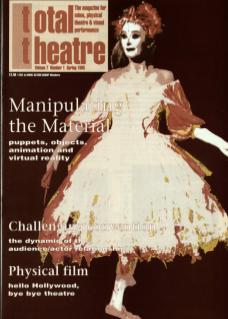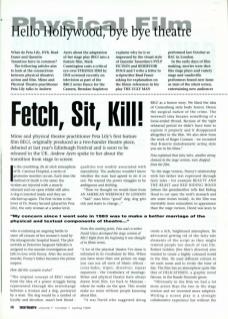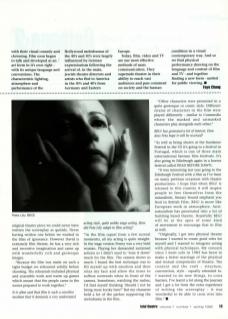What do Peta Lily, DV8, Brad Fraser and Quentin Tarantino have in common?
The following articles aim to look at the connections between physical (theatre) action and film. Mime and Physical Theatre practitioner Peta Lily talks to Andrew Ayers about the adaptation of her stage play Beg! into a feature film, Mark Cunnington casts a critical eye over Strange Fish by DV8, screened recently on television as part of the BBC2 series Dance for the Camera, Brendan Stapleton explains why he is so impressed by the visual style of Quentin Tarantino's Pulp Fiction and Reservoir Dogs and I write a letter to scriptwriter Brad Fraser asking for explanation on the filmic references in his play The Ugly Man performed last October at BAC in London.
In the early days of film-making, movies were shot like stage plays and variety stage and vaudeville performers found new fame as stars of the silent screen, entertaining new audiences with their visual comedy and clowning. Film soon began to talk and developed as an artform in it's own right with its unique language and conventions. The characteristic lighting, atmosphere and performance of the Hollywood melodramas of the 40s and 50s were largely influenced by German expressionism following the arrival of, in the main, Jewish theatre directors and artists who fled to America in the 30s and 40s from Germany and Eastern Europe.
Today, film, video and TV are our most effective methods of mass communication. They supersede theatre in their ability to reach vast audiences and pass comment on society and the human condition in a visual contemporary way. And so we find physical performance drawing on the language and content of film and TV – and together finding a new form – united for public viewing.


